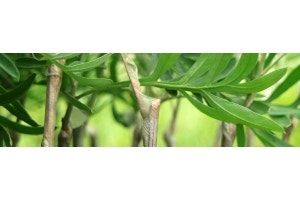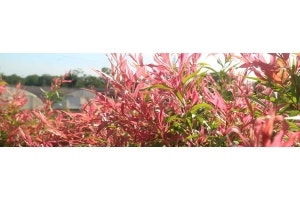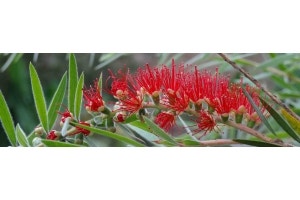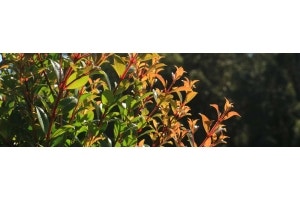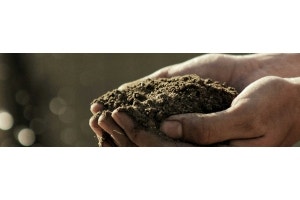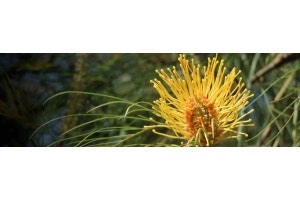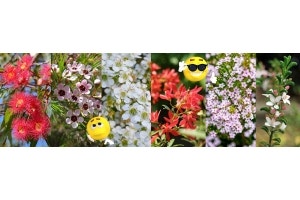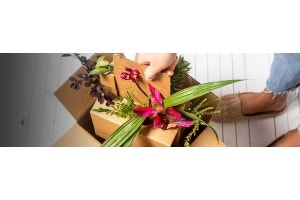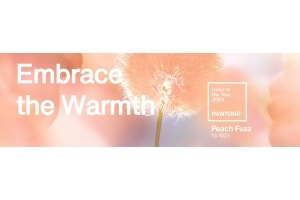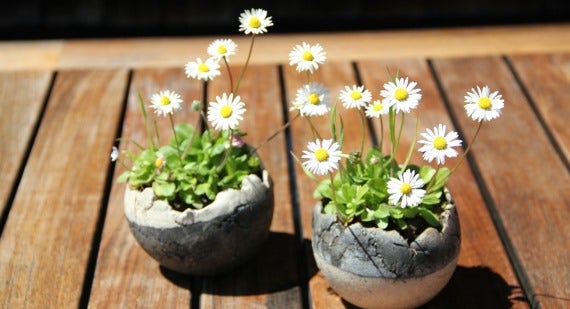
True Daisies
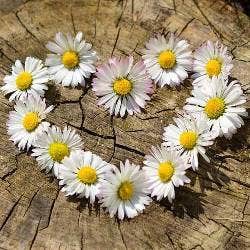 Everyone loves daisy flowers. They are the first flowers we draw when we are just learning to hold a crayon - a round yellow centre, a loop of petals surrounding it, a long green straight stem. They are the flowers we doodle while waiting on a phone call, simple and straightforward. The 'true' daisy is Bellis perennis, a little English carpet plant of green lawns and summer daisy chains. Daisy comes from 'day's eye' - the flowers open at sunrise and close up at sunset. It's a charming plant for cool climates, especially when it naturalises over a large area. Here we're looking at some of the daisy's relatives, that will give you the naive, charming, simple look - and on a bigger scale.
Everyone loves daisy flowers. They are the first flowers we draw when we are just learning to hold a crayon - a round yellow centre, a loop of petals surrounding it, a long green straight stem. They are the flowers we doodle while waiting on a phone call, simple and straightforward. The 'true' daisy is Bellis perennis, a little English carpet plant of green lawns and summer daisy chains. Daisy comes from 'day's eye' - the flowers open at sunrise and close up at sunset. It's a charming plant for cool climates, especially when it naturalises over a large area. Here we're looking at some of the daisy's relatives, that will give you the naive, charming, simple look - and on a bigger scale.
Asters - the daisy family
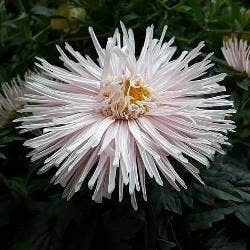 True daisies belong to a plant family called Asteraceae.
True daisies belong to a plant family called Asteraceae. 'Aster' comes from the Greek word for star, as the flowers often have a starry look with all those petals in a ring. Asteraceae is a huge plant family - one of the biggest, with over 32,000 different genera in it. (You can see a list of them all here).
In fact it's so big that taxonomists (the people who decide how to categorise the living world) have split Asteraceae into three 'Super-Tribes' - the Asters, the Senecios, and the Helianths - each of which are split into further 'Tribes', in an attempt to make it more manageable. So many daisy plants! Think of it like a sprawling multi-generational family drama, without all the fighting... Let's meet some of the cast :
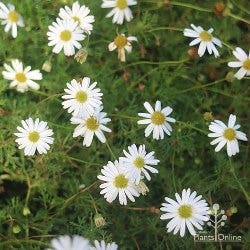
The aster tribe - Astereae
The Aster tribe is the tribe that includes the archetypal daisy plant, Bellis perennis. Some of the best-known other Aster tribe plants in gardens include aster, obviously - like the showy ray aster, in the image above. Or you might know the autumn-flowering Michaelmas daisies, Aster novae-belgii and Aster novae-angliae, tall herbaceous plants with purple, lilac, or white flowers with very narrow petals. Also in this huge family are the Brachyscome or cut leaf daisies, our native Swan River daisy, with ferny leaves, and purple and pink flowers as well as white.
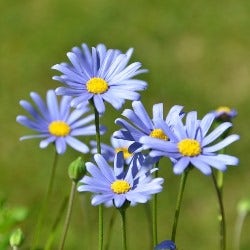 More unusual, but becoming better-known, is one of Australian Plants Online's popular daisy-flowered plants, Felicia, the blue daisy bush. This South African daisy is built on a bigger scale than the dainty English lawn daisy, with long straight stems holding up abundant sky-blue flowers. Their distinctive gold egg-yolk centre reveals the family tree.Seaside daisies - Erigeron - belong to the Aster tribe too; and you can see their close resemblance to English or true daisies in the tiny white slender-petalled flowers.
More unusual, but becoming better-known, is one of Australian Plants Online's popular daisy-flowered plants, Felicia, the blue daisy bush. This South African daisy is built on a bigger scale than the dainty English lawn daisy, with long straight stems holding up abundant sky-blue flowers. Their distinctive gold egg-yolk centre reveals the family tree.Seaside daisies - Erigeron - belong to the Aster tribe too; and you can see their close resemblance to English or true daisies in the tiny white slender-petalled flowers. They are much finer of foliage, and love to trail and ramble, making fast-growing groundcovers and lovely basket plants.
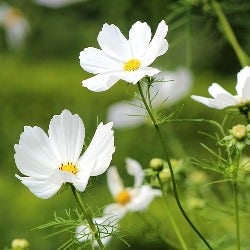
The coreopsis tribe - Coreopsideae
This large tribe contains some of the most popular cottage garden, hanging basket, and summer bedding flowers : cosmos, coreopsis, and dahlia. You might be able to spot the family resemblance in the first two, with their central gold eye and ring of petals. Dahlias are much harder to recognise as daisy relatives, because modern dahlias have largely been bred for double flowers, with multiple tightly-packed layers of petals.Original species dahlias - like D. Dissecta at Auckland Botanic Gardens - are easier to tell, and share the daisy style of cosmos and coreopsis - broad petals in a ring around a flat gold centre.
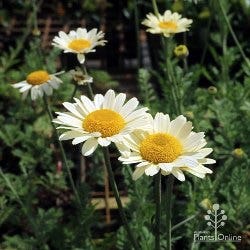
The chrysanthemum tribe - Anthemideae
You might know a member of this family from our own plant range - Anthemis, the yellow dyer's chamomile. Like many members of this tribe, Anthemis has classic daisy looks, pumped up to big sizes. Its smaller-flowered namesake relatives, Roman chamomile and German chamomile (Matricaria), and cousin tansy or feverfew (Tanacetum) are well-known medicinal herbs.Most share the classic gold-eye-white-petal daisy design; a few have lost their outer petals altogether and focus their efforts on growing clusters of tightly-packed golden centres instead.
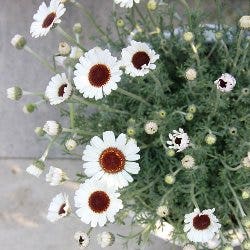
Eumorphia Silver Cloud, a South African shrub, takes dainty white daisy flowers and decorates a spreading soft-leaved silvery bush with them. Rhodanthemum, the Moroccan daisy, moves into a more dramatic colour palette - white petals around a dark chocolate centre.
Like many Asteraceae plants it's tough and rugged, not minding poor soil or hot sun; which is just as well when you come from Morocco.
Leucanthemum - ox-eye and shasta daisies - are classic daisy plants on a jumbo scale, sized to hold their own in cottage garden borders. The well-known Chrysanthemum and Argyranthemum come in a dazzling range of bright colours, as well as white, to suit every garden scheme. You might see these sold as summer bedding colour, under their common names of pot mums and marguerites.
Asters - distant cousins
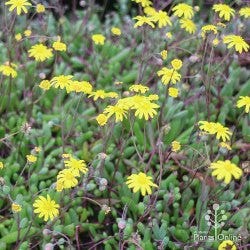 Still in that huge 32,000-strong Asteraceae family, if a little more distantly-related to the archetypal lawn daisy, are dozens of charming garden plants. They include some very popular and well known flowers, some of which are easy to spot as daisy relatives, and others which hide their family origins. These include plants you probably wouldn't think of as related to daisies, such as African marigolds, zinnia, Curio - which includes popular succulent plants like string of pearls and chalk sticks - and the lovely groundcover succulent Othonna Ruby Necklace, also known as little pickles.
Still in that huge 32,000-strong Asteraceae family, if a little more distantly-related to the archetypal lawn daisy, are dozens of charming garden plants. They include some very popular and well known flowers, some of which are easy to spot as daisy relatives, and others which hide their family origins. These include plants you probably wouldn't think of as related to daisies, such as African marigolds, zinnia, Curio - which includes popular succulent plants like string of pearls and chalk sticks - and the lovely groundcover succulent Othonna Ruby Necklace, also known as little pickles. The fat fleshy leaves of Othonna are a cunning daisy disguise, but look closer and the starry gold flowers give the game away.
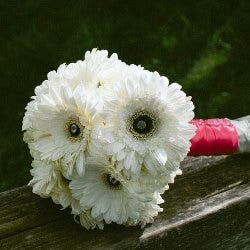
The mutisia tribe - Mutisieae
Far far away, in a distant globe-spanning supertribe, lies the gerbera, looking for all the world like a daisy that swallowed Alice's Eat Me cake. It's the best-known of its relatives in the tribe, because it makes a beautiful florist flower as well as a good garden plant. Those long straight stems are tailormade for bouquets and arrangements like this wedding bouquet here; and they hold up big flowers full of slender petals in a rainbow of shades. You might find gerberas labelled as Transvaal daisy, as they originate in southern Africa.
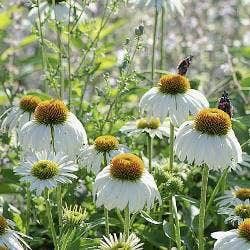
The sunflower tribe - Heliantheae
Even though they are far away from English daisies on the family tree, you can see how a sunflower is really just a supersized yellow daisy!That big round gold centre, the looping ring of long petals surrounding it, the long straight stem. No wonder children love growing them so much. And like miniature sunflowers, the American prairie perennials echinacea and rudbeckia also show their genetic connections to daisies.
The centres are not flat, but raised up into dome shapes, giving them their common name of coneflowers; but seen from above it's easy to see the strong family resemblance.
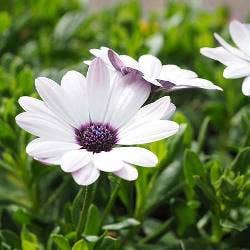
The calendula tribe - Calenduleae
This brightly-coloured tribe includes the flowers that give it its name, Calendula or pot marigold. These bright orange and yellow daisy-shaped flowers have been grown for centuries for their medicinal benefits, herbal remedies and ability to dye cloth. The calendula tribe also includes South African osteospermums, or Cape daisies, which usually flower in purples and pinks. Because of the difference in colour, you might not realise how closely related these two are, but once you look at the shape of the flowers it becomes clear.
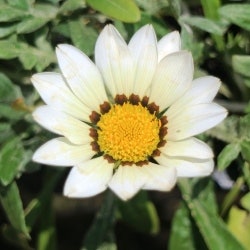
The chicory tribe - Cichorioideae
You'll find the herb chicory here, naturally; and its cousin the dandelion, scourge of many a lawn but historically a hugely important medicinal plant, salad vegetable, dyestuff, and pollinator food. More surprisingly you'll also find the gazania, which shares with the dandelion an ability to grow in the toughest driest places. And of course it traditionally shares that bright golden yellow colour. Modern breeding has introduced a wider palette of shades - plum purple, red and tan, pure white, along with contrasting stripes and streaks. There's also double-flowered gazanias which disguise their daisy roots.
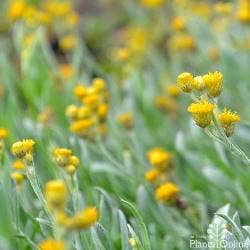
The local tribe - Gnaphalieae
The name might be a challenge to spell and even more challenging to pronounce, but this tribe is our local daisy mob. Lots of them have adapted to the burning sun and drying heat of Australia by ditching their soft delicate outer petals, to contrate on growing the central golden eye. Just as some of the chrysanthemum tribe, like tansy, did on the other side of the world. You can see this in native Aussie flowers like Craspedia and Pycnosorus, known as billy buttons; in Ozothamnus, the rice flower; and in Chrysocephalum, yellow buttons, which looks like a daisy after an enthusiastic game of he loves me, he loves me not.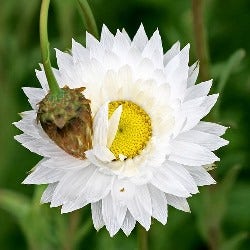 The golden centre is where the pollen is, so these daisies still lure in beneficial pollinators to feed, without the expense of producing showy petals for us humans! Also belonging to this local tribe are paper daisies, everlastings, and strawflowers: Helichrysum, with silvery grey foliage to create a contrast in garden borders; dainty-flowered Rhodanthe, Xerochrysum and Schoenia. Their heat-adaptation solution is to switch to stiff dry petals, almost veneer-like, which keep their daisy good looks for months at a time. Smart, as well as pretty!
The golden centre is where the pollen is, so these daisies still lure in beneficial pollinators to feed, without the expense of producing showy petals for us humans! Also belonging to this local tribe are paper daisies, everlastings, and strawflowers: Helichrysum, with silvery grey foliage to create a contrast in garden borders; dainty-flowered Rhodanthe, Xerochrysum and Schoenia. Their heat-adaptation solution is to switch to stiff dry petals, almost veneer-like, which keep their daisy good looks for months at a time. Smart, as well as pretty!























